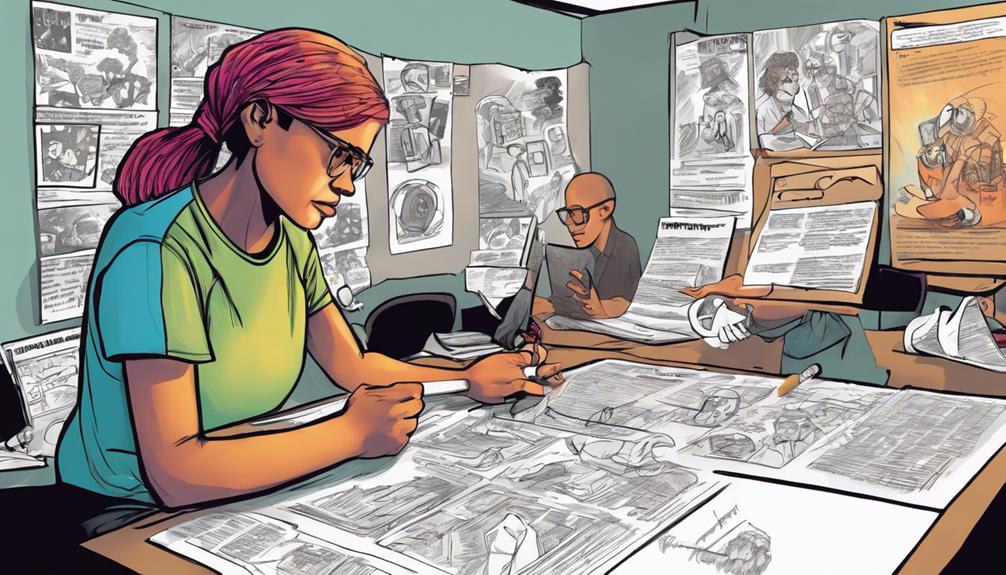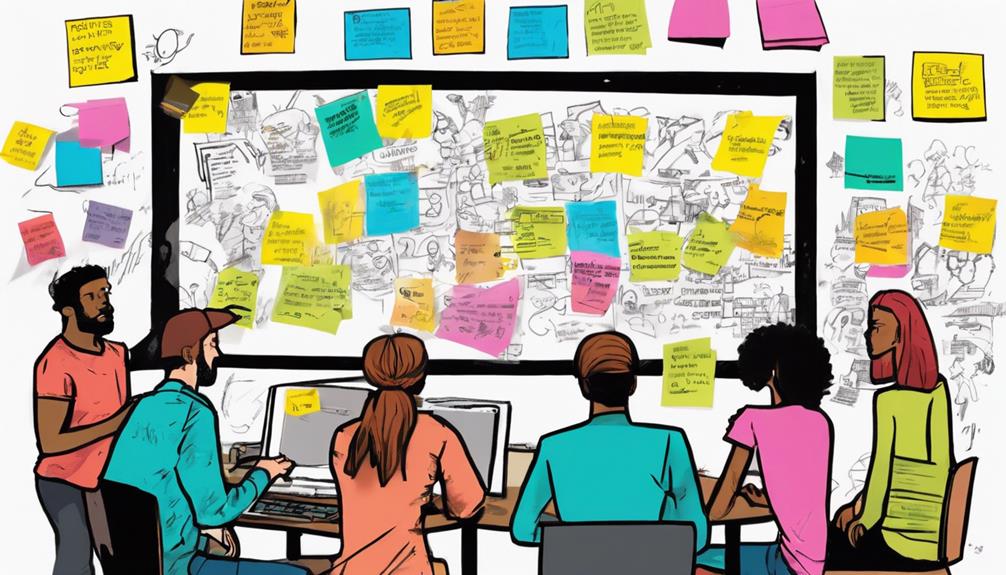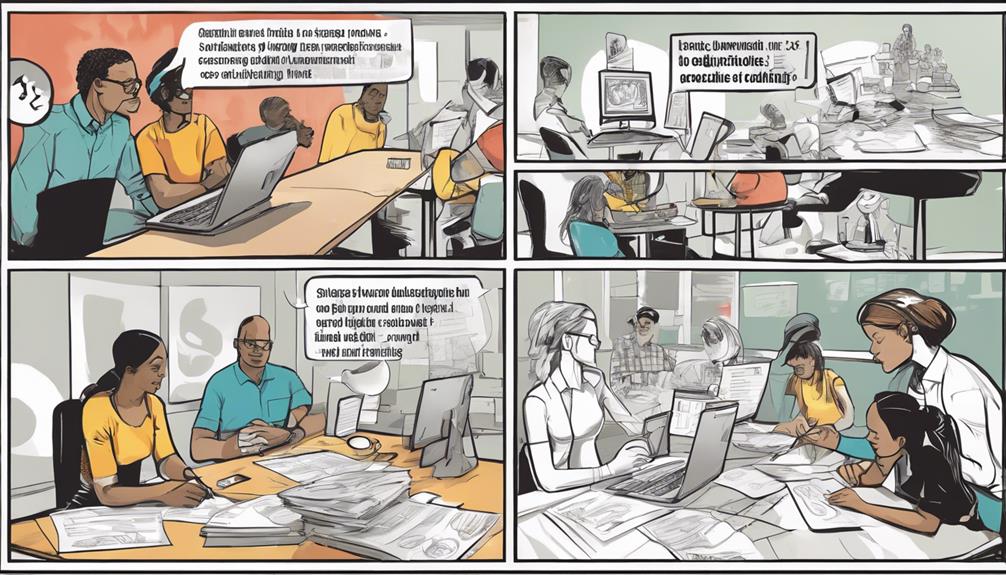In design thinking, the process involves interconnected phases like inspiration, ideation, and implementation. It blends user needs with technological possibilities and economic viability. Convergent and divergent thinking are essential for generating and evaluating ideas. This method is flexible, iterative, and encourages experimentation. Despite its name, design thinking is not just about visual design but offers a holistic problem-solving approach. To fully grasp the depth of design thinking, consider exploring its key elements and applications further.
Key Takeaways
- Design thinking involves interconnected phases like inspiration, ideation, and implementation.
- It blends user needs, technological possibilities, and economic viability.
- The process includes divergent and convergent thinking for idea generation and evaluation.
- Design thinking is a flexible, iterative method applicable to various fields.
- It focuses on practical problem-solving techniques and user-centered research.
Core Principles of Design Thinking
Design thinking revolves around fundamental principles that guide the approach to innovation and problem-solving. The process of design thinking is characterized by its emphasis on human-centered solutions that blend user needs, technological possibilities, and economic viability.
This process isn't a straight path but rather a series of interconnected phases: inspiration, ideation, and implementation. Throughout these phases, both convergent and divergent thinking play pivotal roles in fostering a balance between idea generation and evaluation.
By incorporating divergent thinking, a wide range of ideas can be explored, while convergent thinking helps in selecting the most viable solutions.
Design thinking is a versatile process that can be applied not only to product and service design but also to organizational development and strategy enhancement. The key phrase 'How might we?' is integral to the design-thinking process as it encourages seeking existing solutions and promotes collaborative problem-solving.
Through these core principles, design thinking offers a structured yet flexible approach to tackling complex challenges effectively.
Key Elements of the Design Process
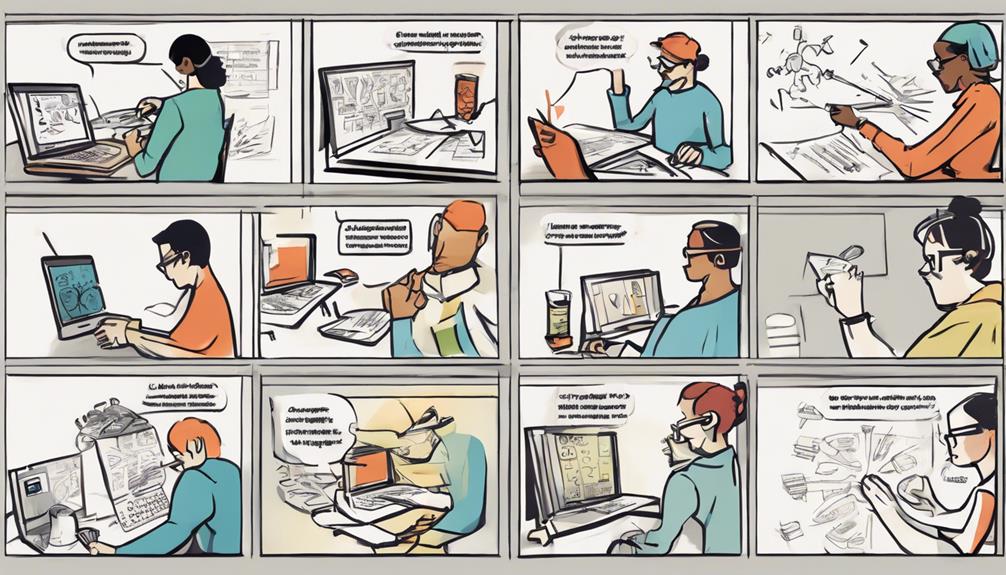
The vital components of the design process include stages like empathize, define, brainstorm, prototype, and evaluate. This structured approach is essential for understanding users' needs, defining the problem, generating creative ideas, building prototypes, and testing solutions. By following these steps, you can guarantee that your design is user-centered, innovative, and effective.
Empathizing with users allows you to gain insights into their experiences, motivations, and challenges. Defining the issue helps you focus on specific problems that need to be addressed. Brainstorming encourages you to generate ideas and explore a wide range of solutions. Prototyping enables you to visualize concepts and gather feedback early on. Evaluation ensures that the final solution meets users' needs and expectations.
Misconceptions About Design Thinking
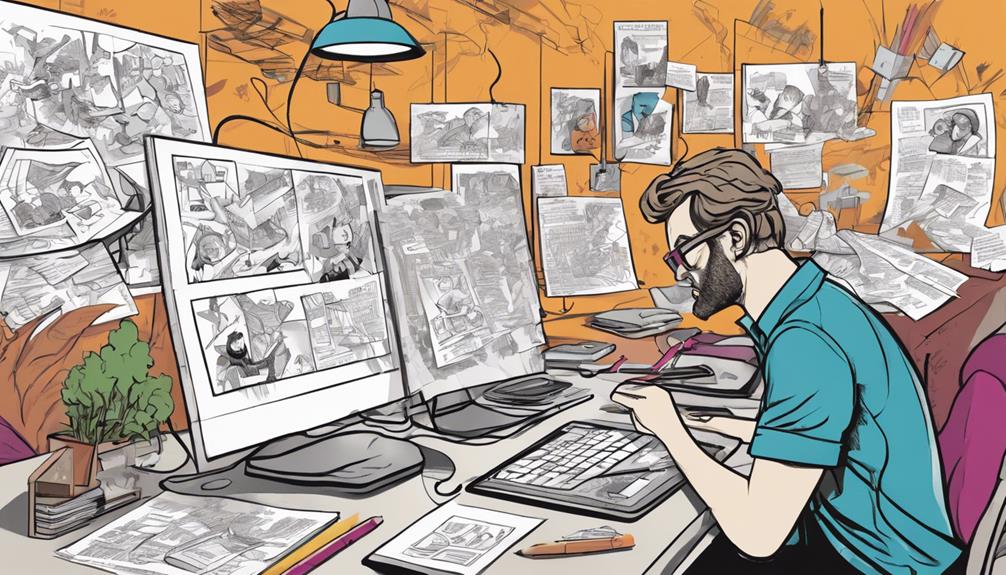
You might've heard some common misconceptions about design thinking that need clarification. Let's shed light on these misunderstandings to help you grasp the essence of the design thinking process better.
Understanding these points will allow you to appreciate the full scope and power of design thinking in problem-solving.
Common Design Thinking Misconceptions
Are you under the impression that design thinking is solely about visual design? One common misconception about design thinking is that it's limited to aesthetics and graphic design. In reality, design thinking is a holistic problem-solving approach that emphasizes empathy, creativity, and innovation.
Another misconception is the belief that design thinking follows a rigid step-by-step process. Contrary to this idea, design thinking is a flexible and iterative method that encourages experimentation and learning from failures.
Furthermore, some individuals mistakenly think that design thinking is exclusive to designers. However, design thinking can be applied by people from all backgrounds and industries to tackle complex challenges.
Additionally, there's a misconception that design thinking is only about coming up with creative ideas. While creativity is essential, design thinking also involves practical problem-solving techniques and user-centered research methods.
Ultimately, some may assume that design thinking is a one-size-fits-all solution. In truth, design thinking is adaptable and can be customized to suit different needs and contexts.
Clarifying Design Thinking Process
Misconceptions about design thinking often stem from a narrow view of its scope and application. The design thinking process isn't a rigid, step-by-step procedure but rather a dynamic and iterative approach to problem-solving. It consists of overlapping phases – inspiration, ideation, and implementation – where ideas are constantly refined and improved upon.
During the inspiration phase, the AEIOU framework helps in gathering observations to understand users' needs deeply. It's crucial to note that design thinking isn't limited to product design; it can be applied to various fields like business strategy, service design, and social innovation.
In the design thinking process, both convergent and divergent thinking play vital roles. Convergent thinking helps in evaluating and selecting the best ideas, while divergent thinking fosters creativity and generates a wide range of possibilities.
Embracing the fluidity and versatility of the design thinking process can lead to innovative solutions that truly address users' needs.
Importance of Empathy in Design
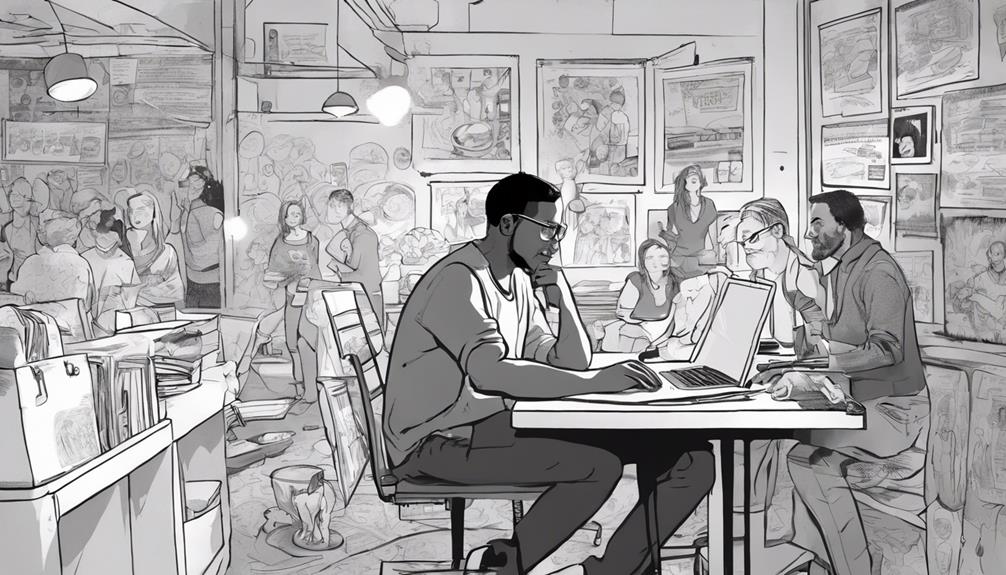
The importance of empathy in the design thinking process can't be overstated. Empathy plays a vital role in understanding and connecting with users on a deeper level. By empathizing with users, designers gain valuable insights into their needs, emotions, and perspectives. This understanding enables designers to create solutions that are more meaningful and impactful for the end-users.
Through empathy, designers can explore the challenges, motivations, and behaviors of users, leading to the development of innovative and user-centric products and services.
Furthermore, empathy allows designers to uncover hidden needs, preferences, and pain points that mightn't be immediately apparent. This deep understanding of users fosters a human-centered design approach, ensuring that the final products resonate with and address the real needs of the users.
Ultimately, empathy in the design thinking process is pivotal in driving creativity, empathy, and successful outcomes that truly benefit the end-users.
Steps in the Design Thinking Process
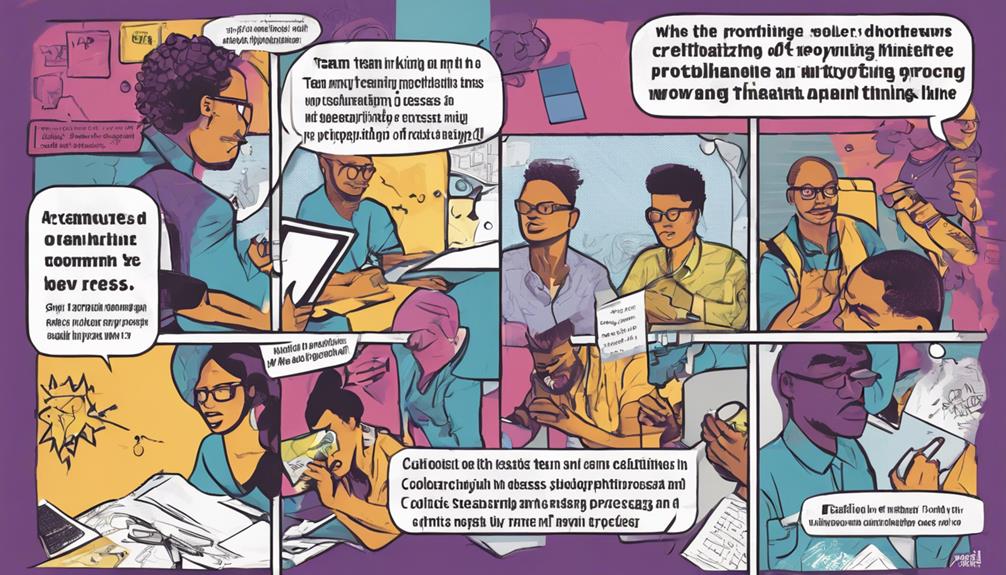
Now, let's talk about the key points in the design thinking process.
You'll explore how this approach involves iterative problem-solving, allowing for flexibility in a non-linear process.
Iterative Problem-Solving Approach
An important aspect of the design thinking process is its iterative problem-solving approach, which involves distinct steps that guide you through understanding and addressing user needs effectively.
One pivotal stage in this iterative process is prototyping. Prototyping allows you to transform your ideas into tangible representations, enabling you to gather feedback and refine your solutions iteratively.
Following prototyping, the next essential step is testing. Testing involves putting your prototypes in front of users to gather insights on how well they meet user needs and expectations. By testing your prototypes rigorously, you can identify potential flaws, make necessary adjustments, and guarantee that your final solution resonates with users.
This iterative cycle of prototyping and testing is fundamental to the design thinking process, as it allows you to continually improve and refine your ideas based on real user feedback, ultimately leading to more innovative and user-centered solutions.
Non-Linear Process Flexibility
Experience the dynamic and iterative nature of the design thinking process through its non-linear approach, providing flexibility and room for creativity in problem-solving.
Unlike traditional linear problem-solving methods, design thinking allows for a flexible and adaptable journey towards finding solutions. This flexibility means you can move back and forth between different stages, revisiting and refining your ideas as new insights emerge.
The non-linear process encourages you to explore various possibilities without being constrained by a predefined sequence of steps.
Insight-Driven Solution Development
How does the design thinking process drive insight-driven solution development through a series of structured steps? In solution development, the design thinking process emphasizes understanding users' needs and problems to create innovative solutions. By following a structured approach, designers can guarantee that the solutions generated directly address the identified challenges. Here is a breakdown of the key steps involved in insight-driven solution development:
| Design Thinking Step | Description | Importance |
|---|---|---|
| Gain Insights | Understand users' needs and problems | Essential for creating user-centric solutions |
| Define Core Issues | Identify key problems in a human-centered manner | Ensures solutions are focused on core issues |
| Ideation | Generate creative solutions by challenging assumptions | Encourages innovative thinking |
| Prototyping | Create scaled-down versions of solutions for testing | Allows for quick iteration and refinement |
| Testing | Evaluate solutions rigorously for effectiveness | Guarantees solutions meet user needs |
Applications of Design Thinking
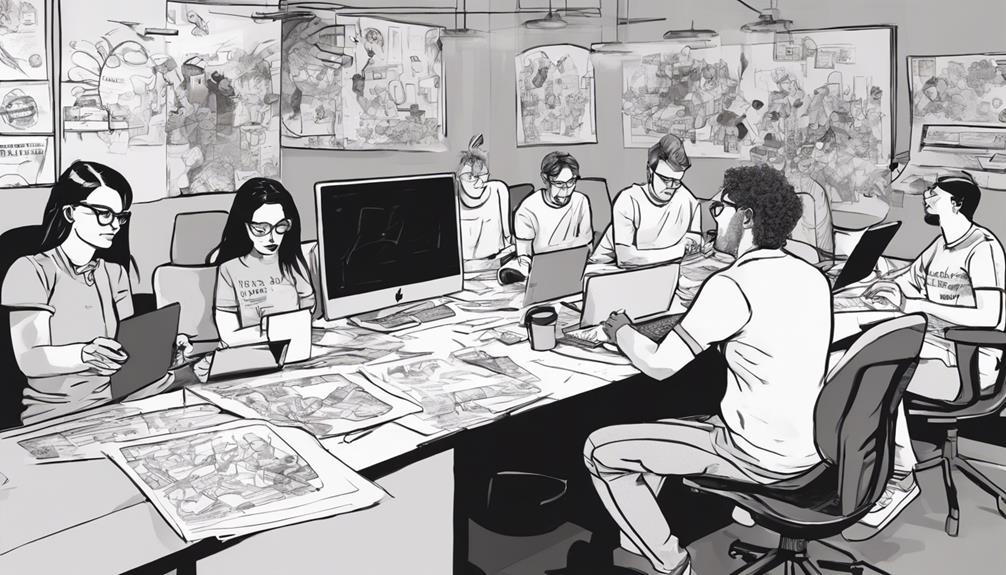
Where can design thinking be effectively applied in various industries and sectors?
Design thinking offers a versatile approach that can enhance the development of products or services, improve organizational strategies, and foster innovation in numerous fields. Here are some key areas where design thinking can be applied:
- Product and Service Design: Design thinking can help in creating user-centric products and services that meet the needs and desires of customers effectively.
- Organization Building: Design thinking can be used to structure organizations in a way that fosters creativity, collaboration, and a customer-focused mindset.
- Strategy Improvement: By applying design thinking, organizations can develop innovative strategies that address market challenges and opportunities.
- Entrepreneurship: Design thinking can aid entrepreneurs in developing viable business ideas and solutions that resonate with their target audience.
- Innovation: Design thinking plays an essential role in driving innovation by encouraging a human-centered approach to problem-solving.
Role of Prototyping in Design
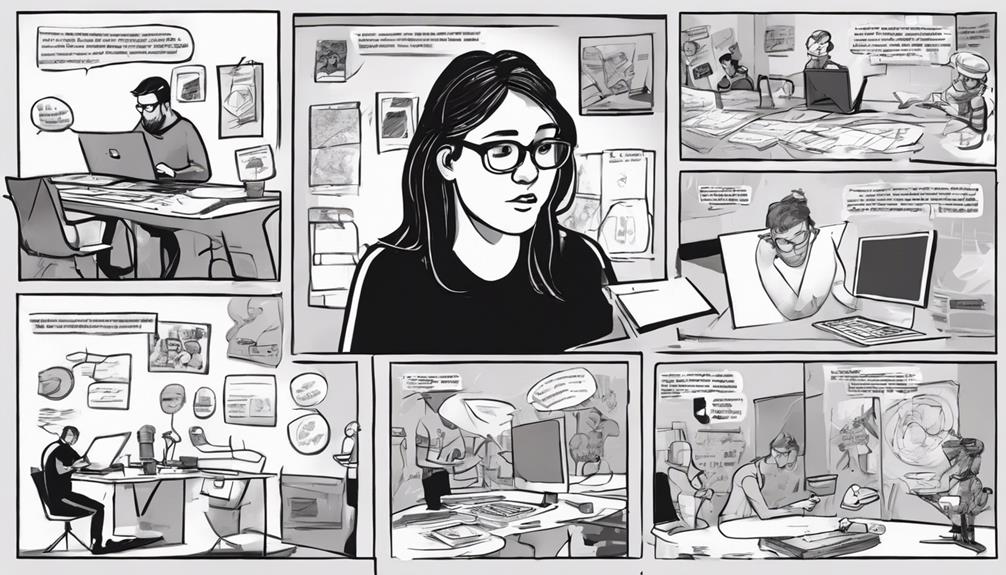
Prototyping in design plays an essential role in the iterative process of refining and testing potential solutions before full implementation.
By creating scaled-down versions of ideas, designers can visualize concepts and gather valuable feedback from users.
These prototypes range from simple sketches to more complex interactive models, allowing for a tangible representation of the envisioned solution.
The iterative nature of prototyping enables designers to make informed decisions, iterate on designs, and validate concepts before committing to a final product.
This process helps in identifying flaws, improving functionality, and ensuring the viability and success of the solution.
Through prototyping, designers can refine their ideas, address user needs, and enhance the overall user experience.
Embracing prototyping as a central component of the design thinking process fosters creativity, innovation, and user-centered design practices.
Benefits of Iterative Design
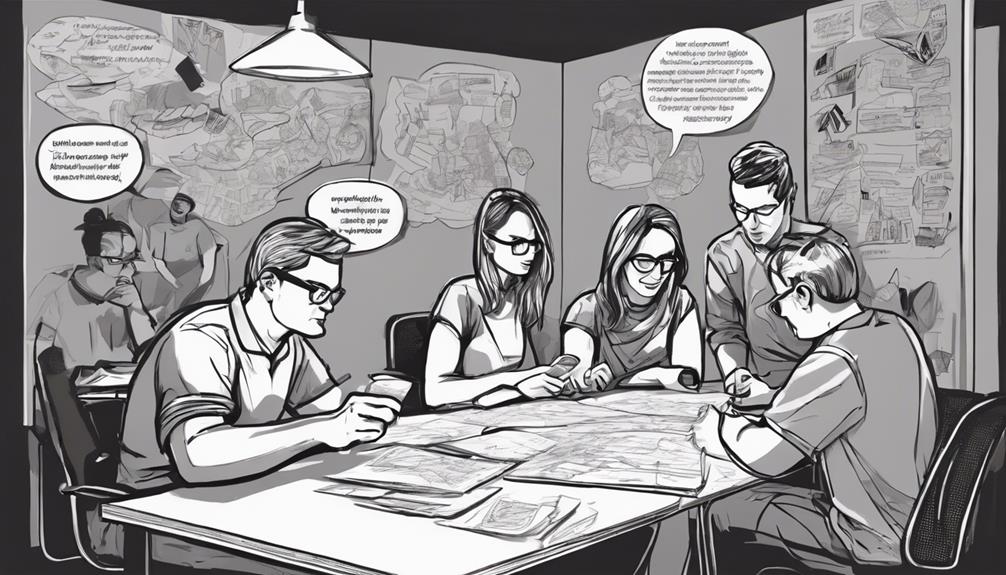
In the field of design thinking, embracing iterative design brings forth numerous benefits that enhance the creative process and solution outcomes. The iterative nature of design thinking allows for continuous improvement and adjustment throughout the problem-solving journey.
Here are some key benefits of incorporating iterative design into the design thinking process:
- Flexibility: Iterative design enables you to adapt to changing requirements and insights seamlessly.
- Continuous Refinement: Through iterative processes, you can refine and enhance solutions incrementally.
- Feedback Incorporation: Iterative design involves feedback loops, ensuring that new ideas and insights are integrated effectively.
- Creativity and Innovation: Iterative design fosters creativity and innovation by encouraging experimentation and exploration.
- Effective Problem-Solving: The iterative approach helps teams effectively tackle complex challenges by breaking them down into manageable steps and iterating on solutions.
Impact of Design Thinking on Innovation
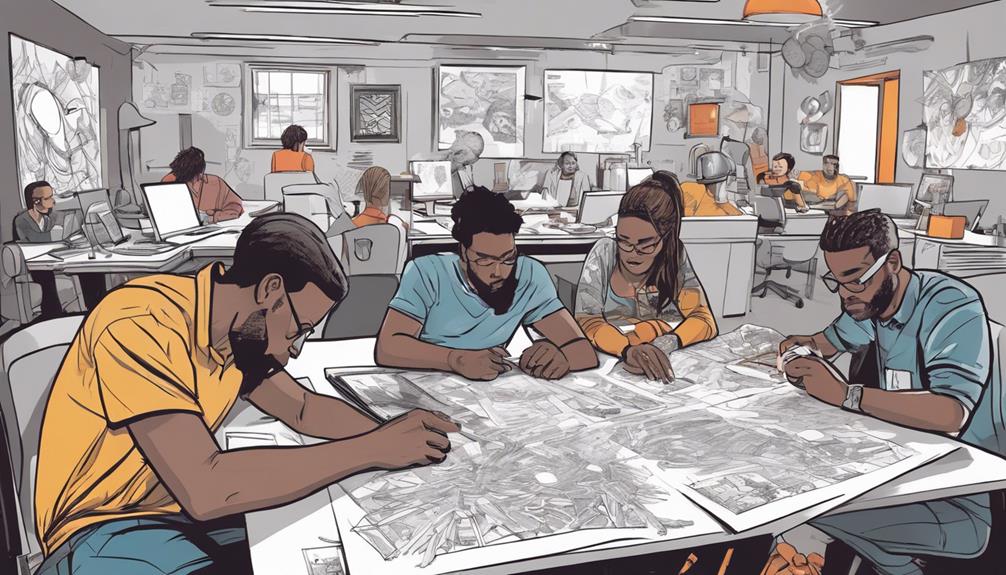
Design thinking's impact on fostering innovation is significant in modern problem-solving approaches. By emphasizing empathy, creativity, and iterative problem-solving, design thinking fosters a culture of innovation within organizations.
One key aspect of design thinking is the collaborative effort of a design team, which brings together diverse perspectives to tackle complex challenges. This interdisciplinary approach ensures that solutions aren't only feasible but also tailored to meet user needs effectively.
The design thinking process, with stages like empathizing, defining problems, ideating, prototyping, and testing, provides a structured framework for driving innovation. It encourages organizations to explore new possibilities, take calculated risks, and iterate on solutions based on feedback.
This iterative nature of design thinking allows for continuous improvement and adaptation, leading to innovative outcomes that resonate with users and create value in the market.
Frequently Asked Questions
Which Statement About Design Thinking Is True?
When you consider design thinking, remember it's all about human-centered innovation. The process involves understanding user needs, brainstorming solutions, prototyping, and testing. It's a collaborative, iterative approach focusing on emotional and functional aspects.
What Is the Design Thinking Process Is?
The design thinking process involves empathizing, defining problems, ideating solutions, prototyping, and testing. It fosters innovation through collaboration, diverse perspectives, and a human-centered approach. Applicable beyond product design, it allows for continuous refinement and improvement.
What Statement Best Describes Design Thinking?
In understanding design thinking, you'll find it's a human-centered, innovative approach. It involves empathizing, defining needs, ideating, prototyping, and testing. This process fosters creative solutions and can enhance products, services, organizations, and strategies.
What Step Process Is Design Thinking ____?
In the design thinking process, you empathize with users, define the problem, brainstorm solutions, create prototypes, and test them. This iterative and user-centric approach fosters innovation by understanding user needs and refining solutions accordingly.
Conclusion
So, as you can see, design thinking is a powerful process that can lead to innovative solutions in a variety of industries.
Take for example the case of Airbnb, which used design thinking to revolutionize the way people book accommodations.
By focusing on empathy and prototyping, they were able to create a user-friendly platform that disrupted the traditional hotel industry.
Design thinking truly has the potential to drive impactful change and drive success.
